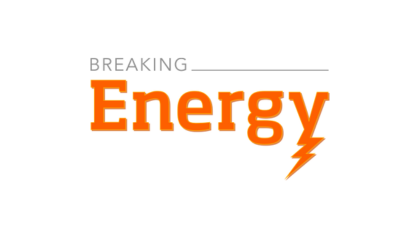Half empty in the West, half full in a handful of centrally planned economies
Nuclear power’s prospects appears to be doomed in the West where markets and private investors tend to make the decisions and assume the risks, that is, if they can get the public’s support and regulator’s approval. In other parts of the world, where central governments make the calls and public’s approval is not as critical, it may be a different story.
Over the past 10 years in the US, for example, nuclear generation has increased by a mere 1% while generation from fossil fuels – mostly from natural gas – has grown by 11%. By contrast, generation from wind increased by a factor of nearly 16 and solar generation is roughly 5 times higher than it was in 2003.
Moreover, the recent announcements to shut down 5 nuclear reactors in 2013 virtually cancels out the 4 new reactors expected to come on line in 2017-19 time frame. In the US, at least, hardly anyone sees growth in nuclear numbers.
The story does not get better in Europe where only 2 new reactors are currently under construction, one in Finland and one in France, both delayed and both over budget. Germany is phasing them out, Switzerland has vowed not to replace its existing ones, as are a number of other countries in the EU.
The only good news from Europe is that two new reactors are expected to be built in the UK, but that is not enough to keep the country’s current share as many aging reactors are approaching retirement. The 2 new UK reactors, incidentally, will use French technology with Chinese financing under what is an essentially fixed-price guarantee indexed for 35 years by the government – an incredible offer that makes the investment virtually risk-free.
Undeterred, in its latest report released in mid-September 2013, the World Nuclear Association (WNA) says global demand for uranium is expected to increase considerably up to 2030, resulting in a substantial need for additional supplies of nuclear fuel.
Do You Believe in These Boundaries?
The 2013 edition of The Global Nuclear Fuel Market – Supply and Demand 2013-2030, projects global nuclear capacity to grow between now and 2030 at a faster rate than at any time since 1990 – while that may be true, it is not saying much as the mid-page graph on page 19 illustrates.
In the WNA’s reference scenario, world nuclear generating capacity will increase from the current level of 370 GW – this includes all Japanese reactors except Fukushima Daiichi 1-4 – to 433 GW by 2020 and to 574 GW by 2030. In the more optimistic upper scenario, the equivalent figures are 466 GW and 700 GW; under a pessimistic lower scenario, nuclear generating capacity effectively stagnates in the period to 2020 and then drops to 341 GW in 2030. You can pick the scenario you like best. This author is not sold on the first two scenarios.

Source: WNA: Height of bars represents % of electricity generation from nuclear, the width represents the amount of generation in 2010
Earlier WNA projections of a nuclear renaissance, not in the latest report, put global nuclear capacity at 1,100 GW by 2060 under a low-growth scenario. Even WNA no longer believes these numbers.
Needless to say, the WNA has revised its projections downwards since the 2011 edition of The Global Nuclear Fuel Market. The lower projections reflect not only the post-Fukushima calls for higher safety standards but, more important especially in the US and the EU, the strong push for renewables at a time of modest or no growth in electricity demand.
Nuclear’s only chance for a revival in the West would be predicated on a combination of one or more of the conditions listed below:
- High and rising carbon prices;
- High and rising natural gas prices;
- A reversal in renewable policies.
While the middle bullet applies to Japan and the EU, none currently applies in the North American context. No one sees high carbon prices or a reversal of renewable growth.
A study released by the Worldwatch Institute reaches similar conclusions. It notes that expansion of nuclear power generating capacity has slowed considerably – a mere 75 GW were added, compared with 296 GW during the preceding quarter century. Today, nuclear power does not show significant growth. Its share of the world’s primary energy supply has been on gradual decline from 6.4% in 2002 to 4.5% by 2012. Global nuclear capacity increased by 4.2 GW, or 1.1% to 373.1 GW with only 2 new reactors for a total of 437 nuclear reactors worldwide at the end of 2012.
US remains the world’s leading nuclear power with 102.1 GW of capacity and 104 reactors – at least 5 reactors will be shut down in 2013 not reflected in these numbers – while France remains the most nuclear-dominant major economy getting over 75% of its electricity from atom compared with 19% in the US (graph above right).
Worldwatch Institute notes that globally, some 67 nuclear reactors with a capacity of 64.3 GW are listed as “under construction.” However, 7 of these have been under construction for more than 20 years, suggesting that their completion is painfully slow if not doubtful.




